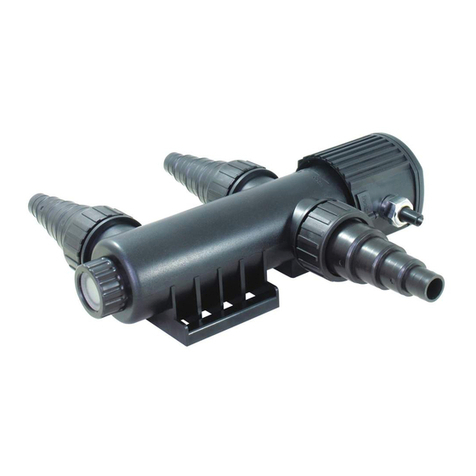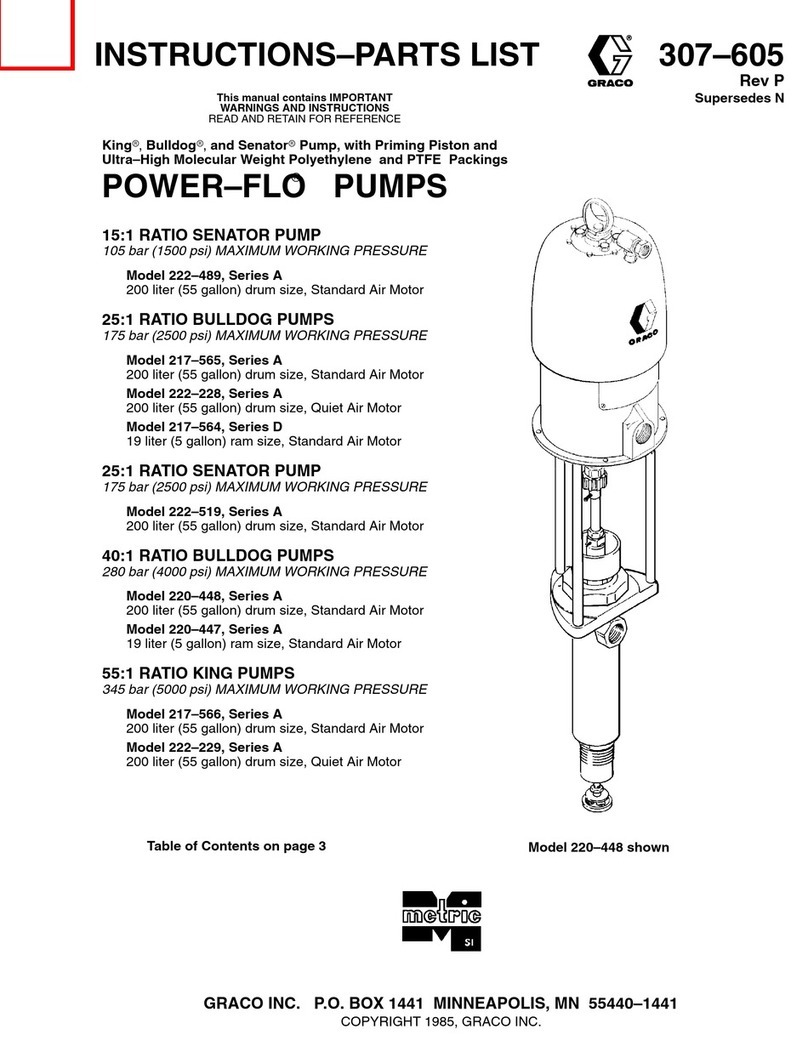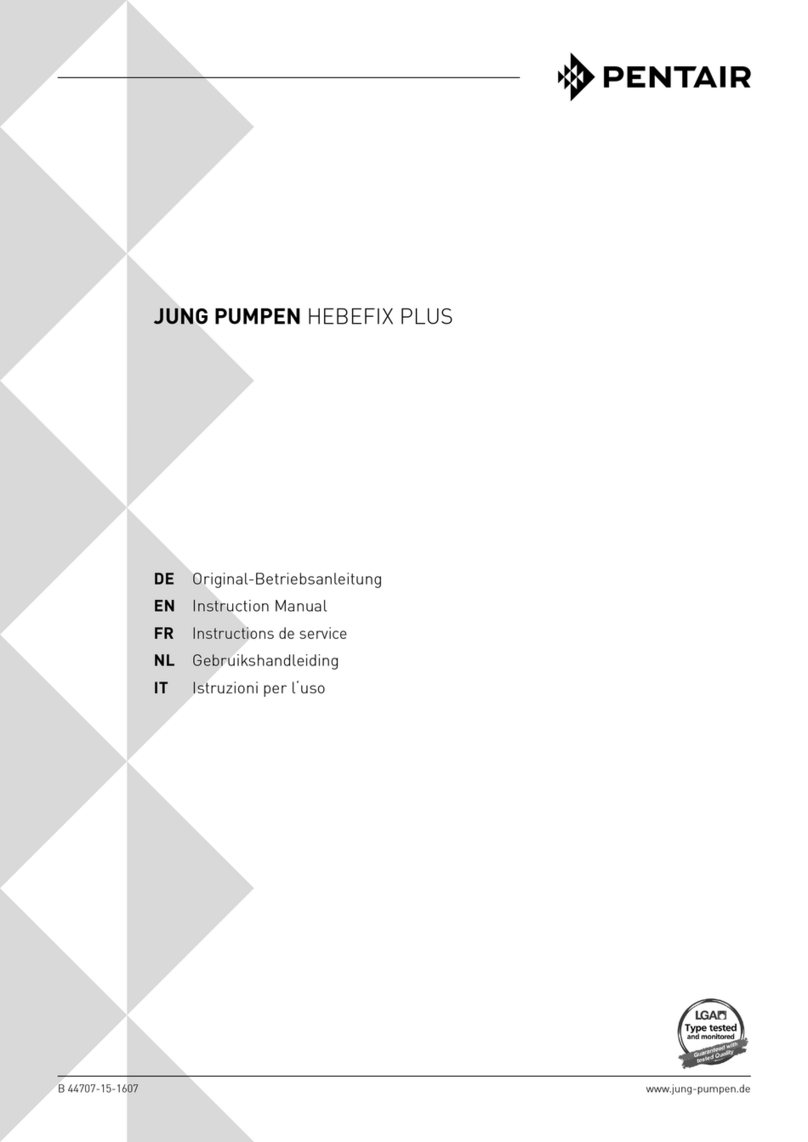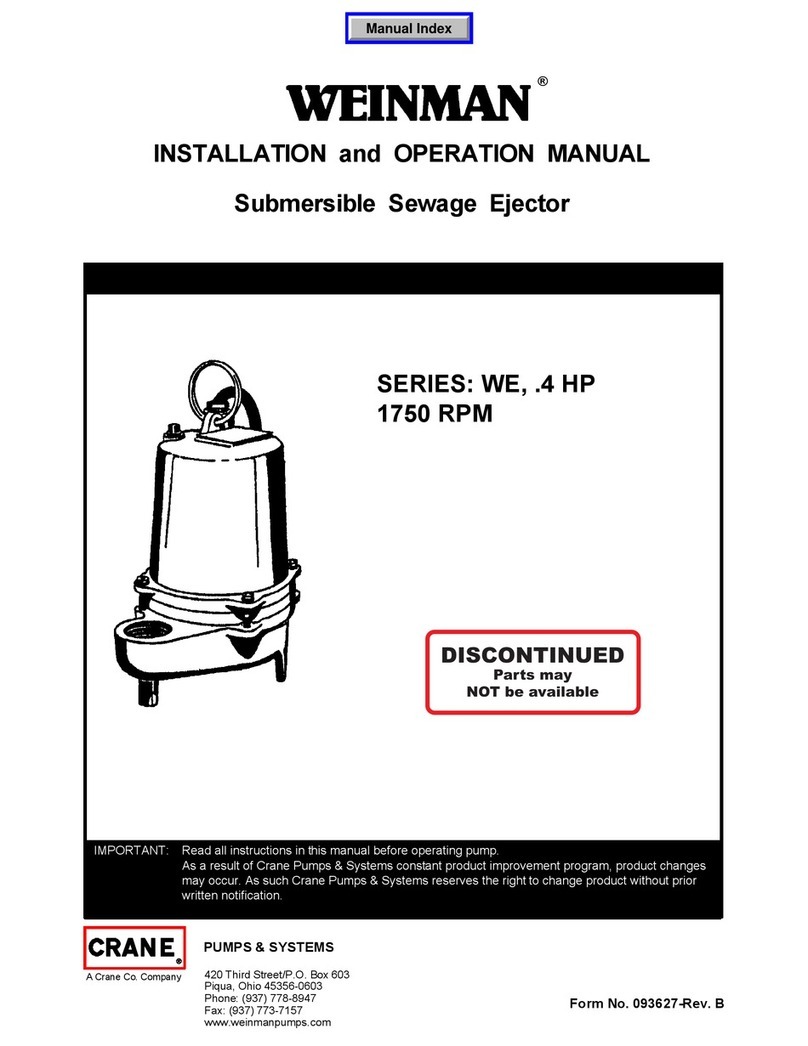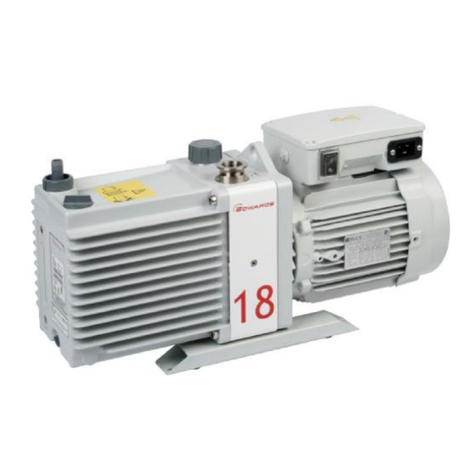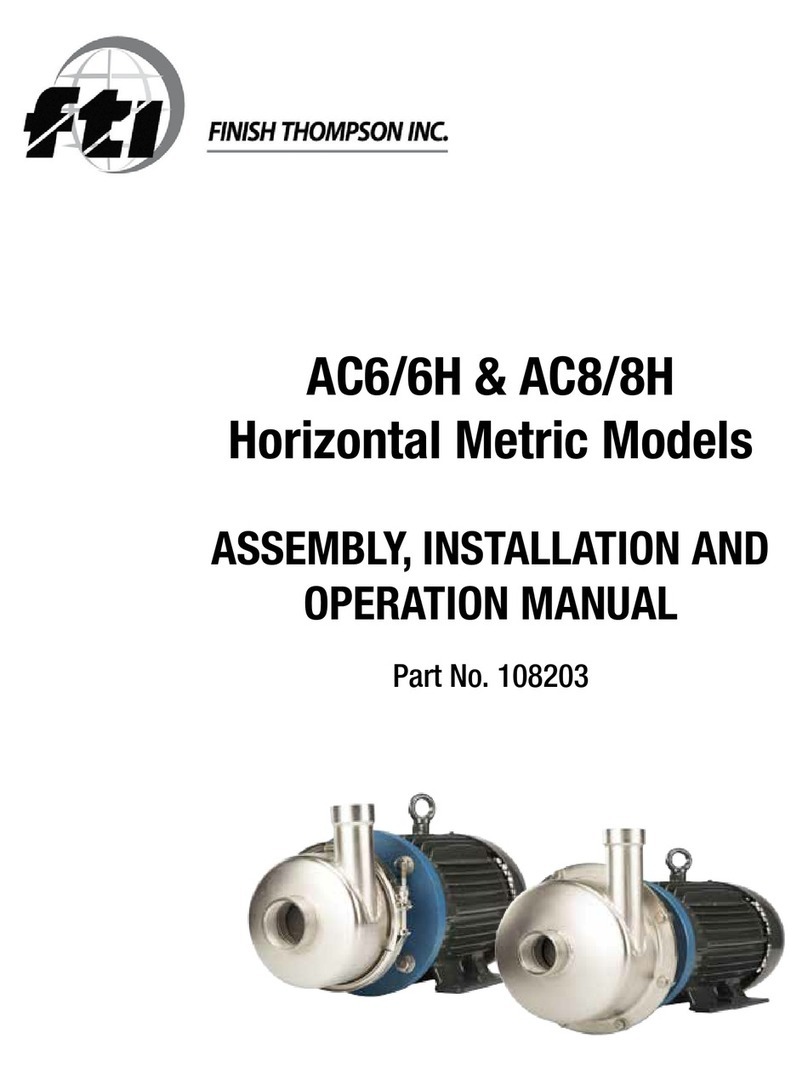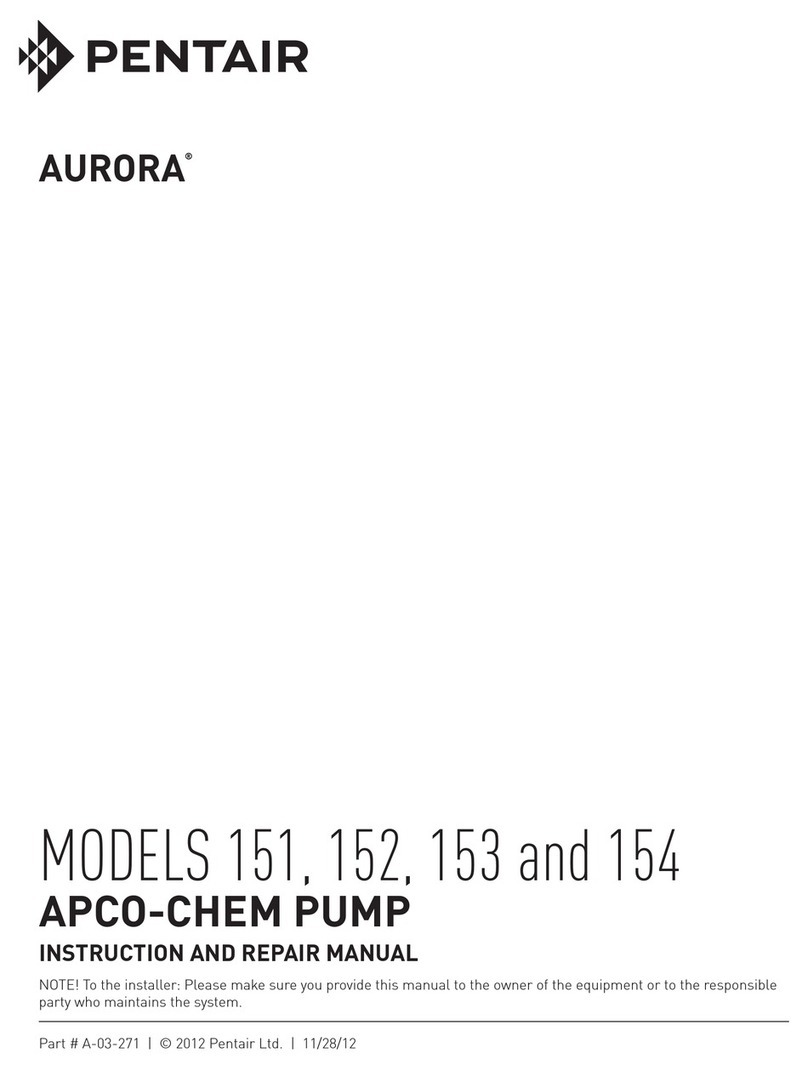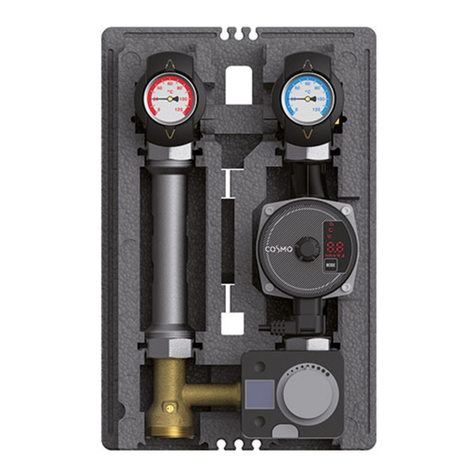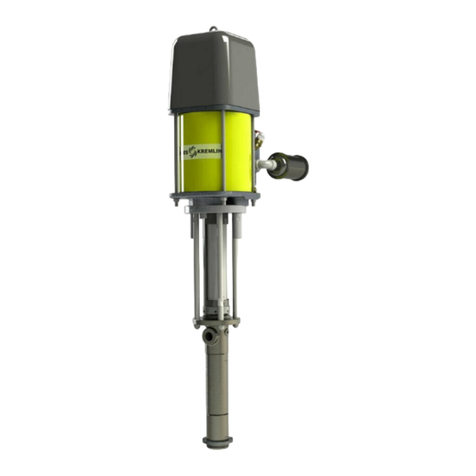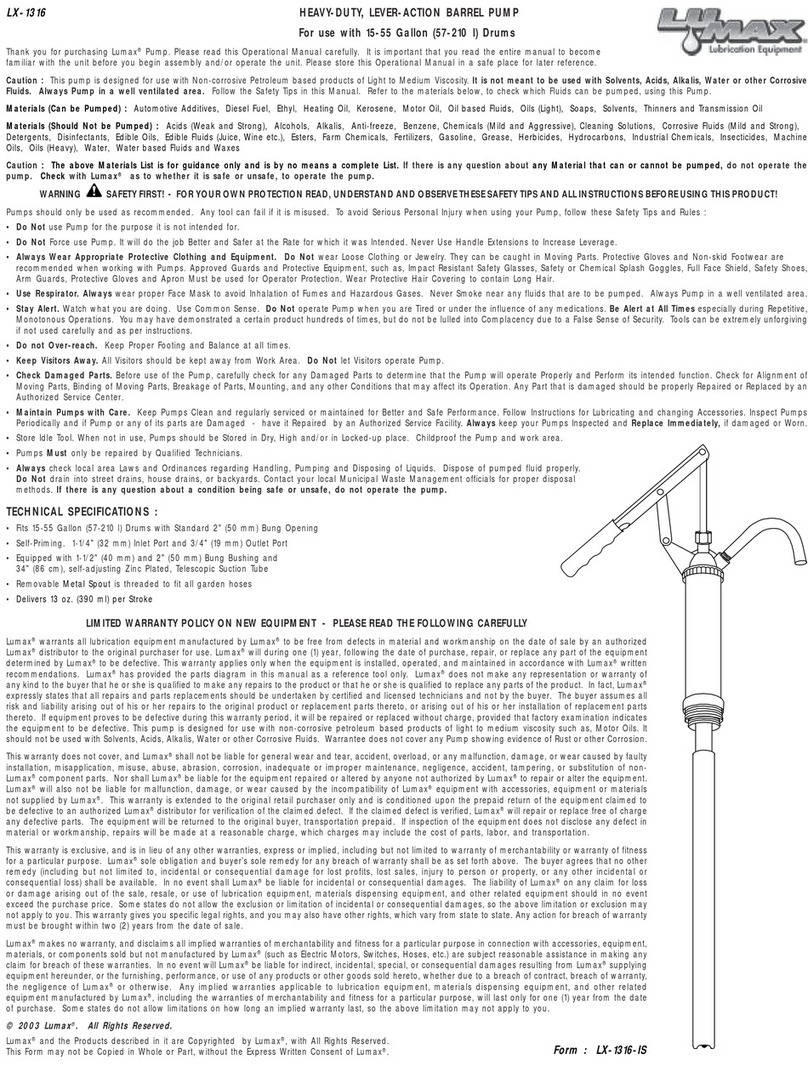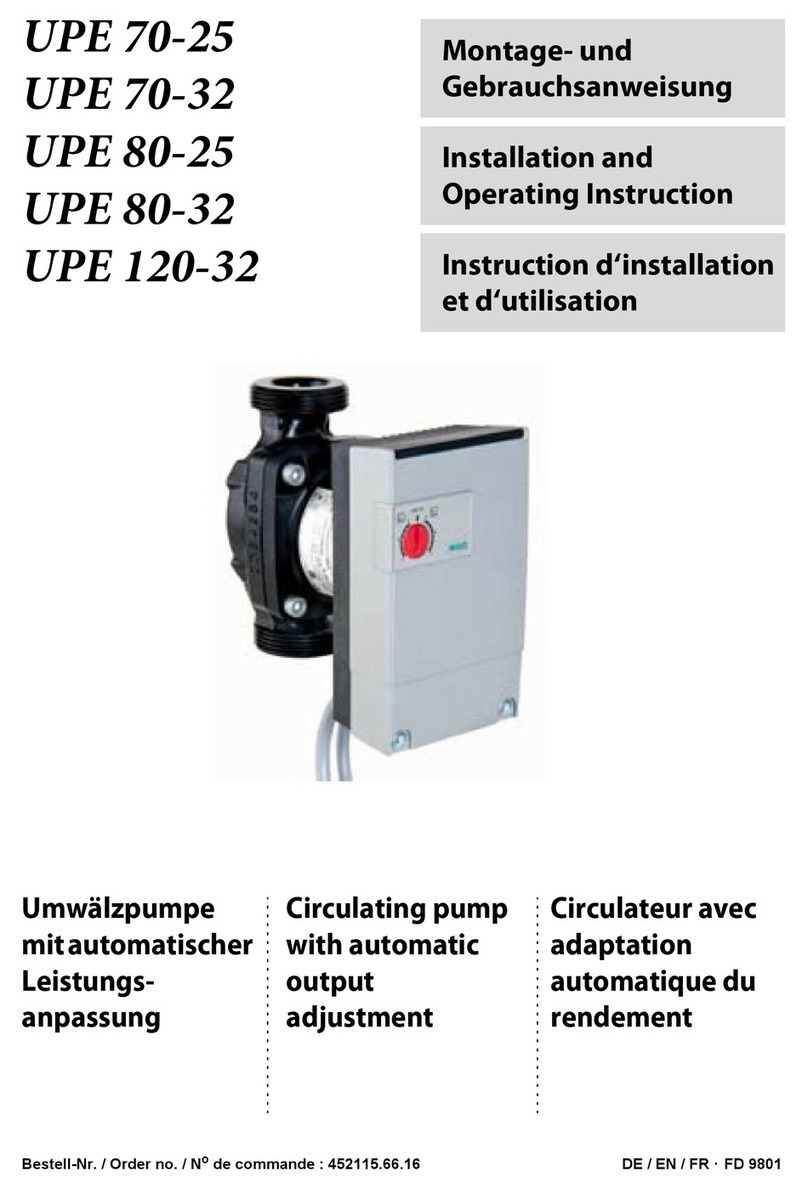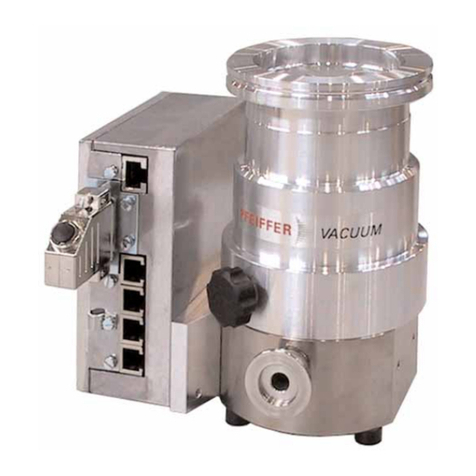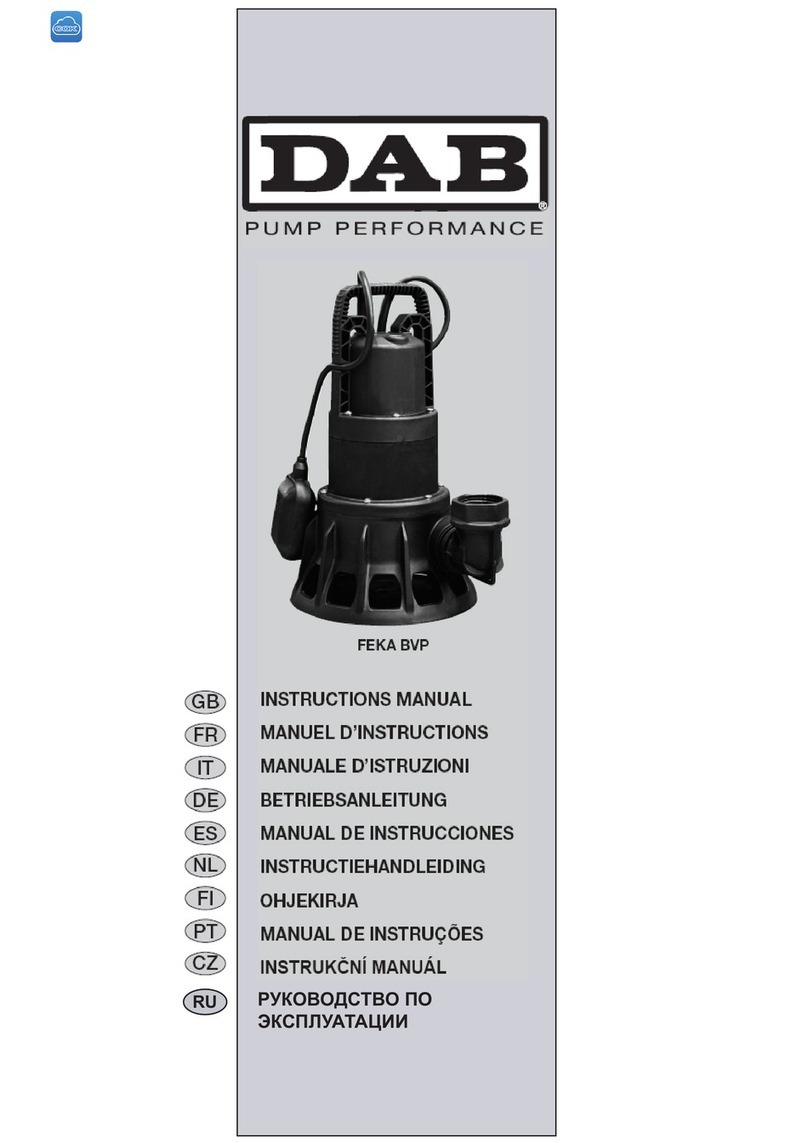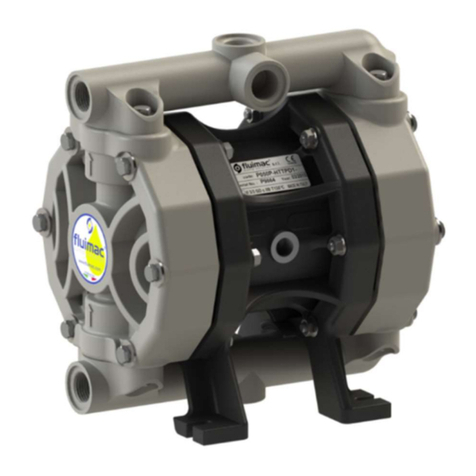
35 REV. 4
- ensure thet the intake or delivery ports are not obstructed nor limited to avoid cavitation or
pneumatic motor strain;
- also ascertain that the connection piping is strong enough and cannot be deformed by the pump
weight or by the intake. Also check that the pump is not burdened by the weight of the piping.
- If the pump is to stay in disuse for a long period of time, clean it carefully by running a non-
- if the pump was turned off for a long period of time, circulate clean water it in for some minutes
to avoid incrustations.
- before starting, after long periods of disuse, clean the internal and external surfaces with a damp
cloth;
- check the grounding for zone 1;
- always protect the pump against possible collisions caused by moving objects or by various blunt
materials that may damage it or react with its materials;
-
WARNING: the air supply pressure must never be over 7 bar or below 2 bar.
WARNING: when using the pump with aggressive or toxic liquids or with liquids that may represent
a health hazard you must install suitable protection on the pump to contain, collect and signal any
spills: DANGER OF POLLUTION, CONTAMINATION, INJURIES AND/OR DEATH.
WARNING: the pump must not be used with fluids that are not compatible with its construction
materials or in a place containing incompatible fluids.
WARNING: installing the pumps without on-off valves on the intake and delivery sides to intercept
the product in case of spillage is forbidden: danger of uncontrolled product spillage.
WARNING: installing the pumps without on-off, three-way or check valves on the air supply piping
to prevent the pumped liquid from entering the pneumatic circuit if the diaphragms are broken is
forbidden: danger of fluid entering the compressed air circuit and being discharged into the
environment.
WARNING: Should the user think that the temperature limits set forth in this manual may be
exceeded during service, a protective device must be installed on the system to prevent the
maximum allowed process temperature from being reached. If exceeded, respect of the maximum
temperature marked cannot be guaranteed.
WARNING: The pumps must always be grounded irrespective of any organ to which they are
connected. Lack of grounding or incorrect grounding will cancel the requirements for safety and
protection against the risk of explosion.
WARNING: the use of pumps made with nonconductive material, which become charged with
static, and without suitable grounding for flammable liquids is forbidden: RISK OF EXPLOSIONS
DUE TO STATIC CHARGE.
WARNING: Aggressive, toxic or dangerous liquids may cause serious injuries or damage to health;
therefore, it is forbiffen to return a pump containing such products to the manufacturer or to a
service center. You must empty the internal circuits from the product first and wash and treat it.
WARNING: Pumps containing aluminium parts or components coming into contact with the
product cannot be used to pump III-trichloroethane, methylene chloride or solvents based on other
halogenated hydrocarbons: danger of an explosion caused by a chemical reaction.
WARNING: The pumps PHOENIX cannot pump Acetylene, Hydrogen, Carbon disulfide.
WARNING: The components of the pneumatic exchanger, including the shaft are made from
materials that are not specifically resistant to chemical products. If the diaphragm should break,
replace these elements completely if they have come into contact with the product.
WARNING: The air-driven motor of the PHOENIX pumps is self-lubricating and will not require
any greasing. Therefore, avoid using lubricated and non-dried air.
WARNING: ascertain that during service no anomalous noise appears. In that case, stop the
pump immediately.
WARNING: ascertain that the flid at the delivery side does not contain gas. Therwise stop the pump
immediately.
WARNING: the diaphragms (in contact with the product or the external ones) are highly subject
to wear. Their duration is strongly affected by the conditions of use and by chemical and physical
stress. Fields tests carried out on thousands of pumps with a head value equal to 0 meters at 18°C
have shown that normal service life exceeds one hundred million cycles. However, in places at risk





















